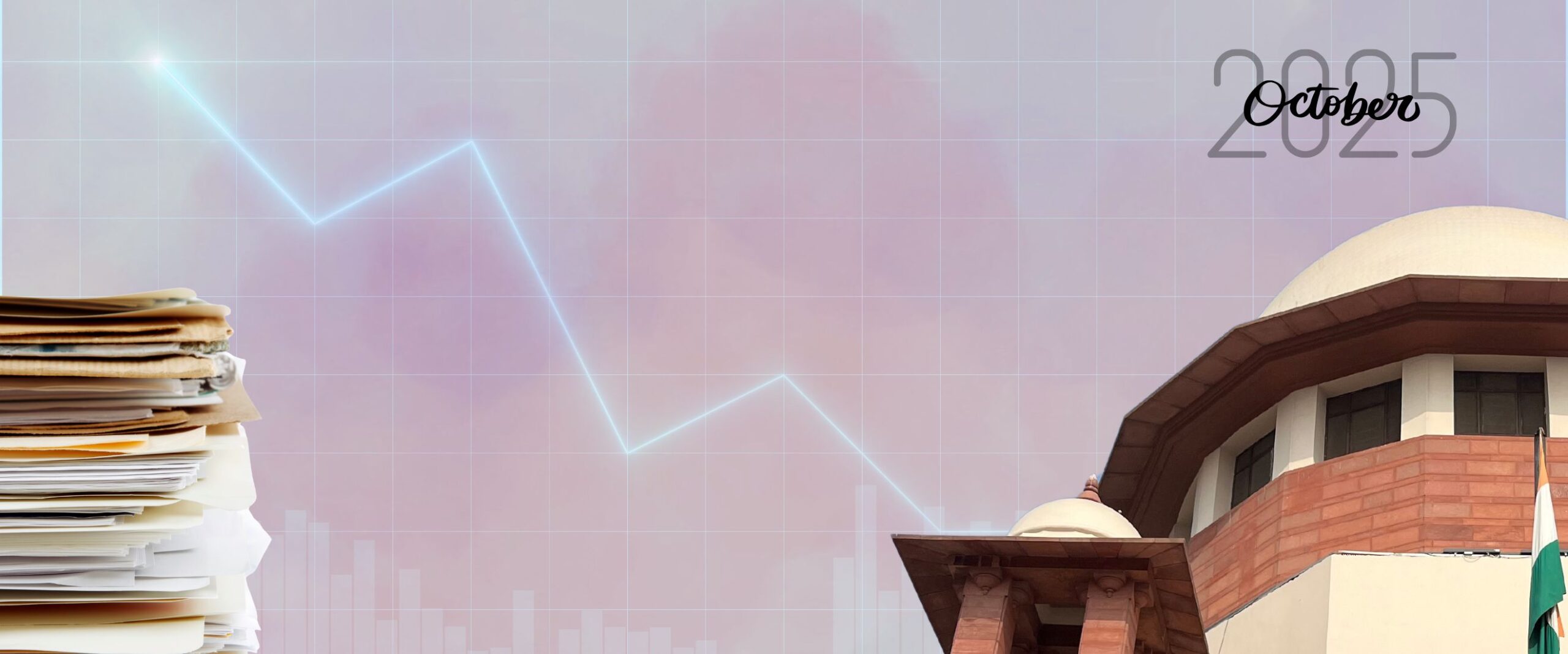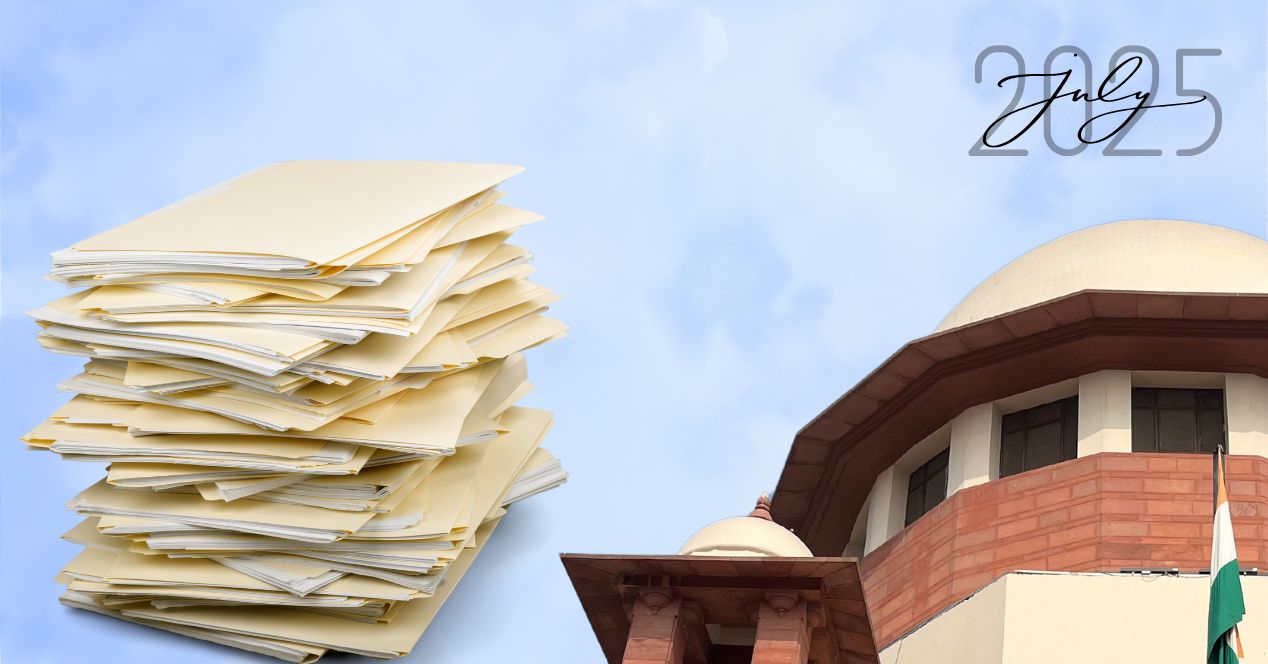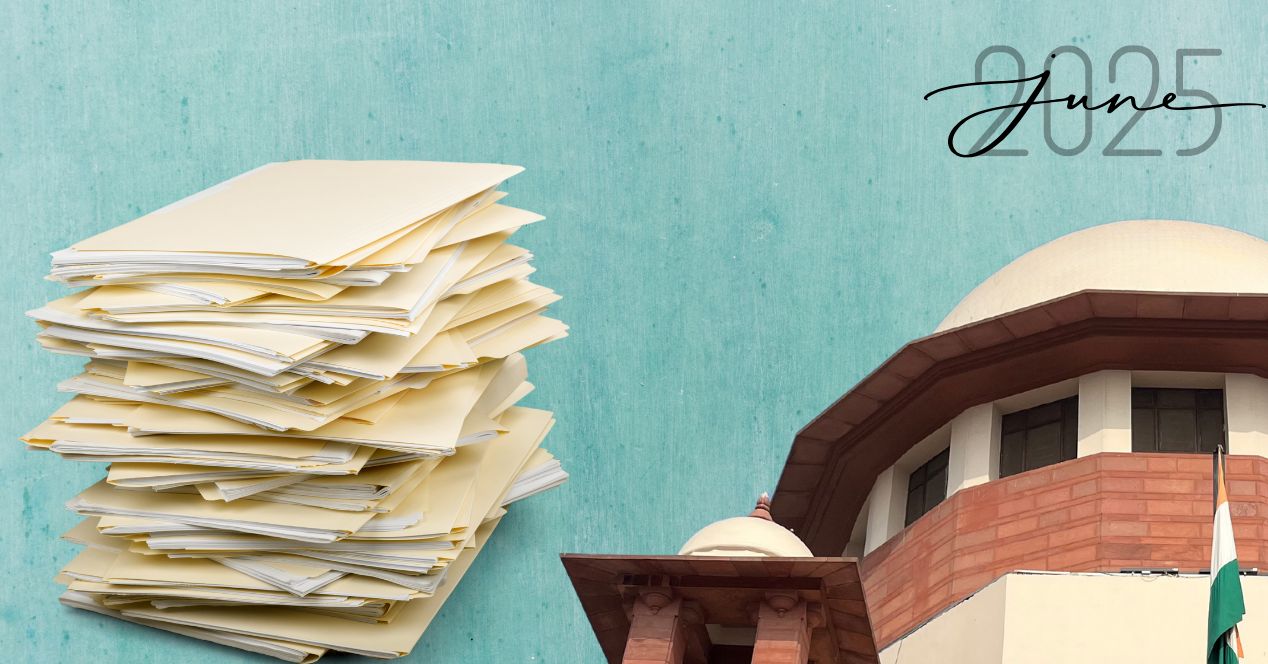Court Data
October 2025: Is the Supreme Court approaching a pendency crisis?
In October 2025, the Court breached the 90,000 mark; the highest it has seen in recent years

October 2025 closed with 90,250 pending cases in the Supreme Court. This figure marks the highest recorded pendency this year and possibly in the Supreme Court since 1993 (to be confirmed at the end of the calendar year).
Pendency from January to October 2025
Figure 1 plots the pendency numbers at the end of each month in 2025. As the graph shows, the rise in the number of pending cases remained steady until May 2025. The number even reduced in two months February and May 2025—indicating that the court had cleared more cases than was filed in that period. Overall pendency had remained below 82,000.
In June, when the Court was on a partial break, the number of pending cases shot up rather uncontrollably. A rise in pendency of cases is expected between May and July every year when the court shuts partially for its summer break. However, in 2023 and 2024, we can see that pendency sharply falls after July when the Court resumes regular hearings. Judges return with renewed gusto and bring a semblance of stability to the pendency problem. This did not happen in 2025, where pendency continued to increase from July to August by 932 cases.
Pendency of cases continued to rise in August, September, and October, resulting in the record high figure. In contrast, pendency had remained under the 85,000 mark in 2023 and 2024—a remarkable achievement considering that the COVID-19 period had seen a skyrocketing of pending cases with continued filing despite halted court proceedings.
The pendency numbers this month can also be attributed to breaks in the court’s usual functioning. The Court was shut for a week each for Dussehra and Diwali break. In break periods like this, the Court continues to receive cases while disposing none every day.
How did we fare against last year’s numbers?
Figure 2 compares the pendency trends with 2024. As the chart shows, pendency in October 2024 had reduced after peaking in June (over 84,000 cases). 2025 deviates from this pattern.
Pendency over five years
Figure 3 tracks the pendency of the Supreme Court from 2020.The data for October 2020 and October 2021 was sourced from the Supreme Court Observer’s coverage, as the Indian Judiciary Annual Report considered data only from January to August-September for those years. The Annual Reports recorded the data for 2022 and 2023.
The pandemic years caused the sharp increase between 2020 and 2021. Between 2021 to 2022, the court took great efforts to resume functioning in a post pandemic world, clearing out cases with speed and efficiency. The numbers reflect that the court was able to clear more cases than it received in this period, causing a small but noteworthy dip of 141 cases.
The change in counting methodology the Court adopted resulted in the increase between 2022 and 2023, where it included all diarised matters, including Miscellaneous Applications, Unregistered Matters, and Defective matters in the pendency count. 2024 appears to be a relatively successful year from the point of view of bringing pendency numbers to control. Though the numbers increased, the jump was smaller than in most years in the past.
Constitution Bench pendency
Figure 4 shows two donut charts tracking the pendency in main and tagged Constitution Bench matters. Main matters are considered to be the lead petition where the Court identified a substantial question of law arising in a case. Tagged matters are cases whose disposals depend on the outcomes of the main matters.
There has been no change in the seven- and nine-judge bench cases in October this year. Notably, no seven- and nine-judge bench matters have been taken up by the Court in 2025. A reduction of one case occurred in the five-judge bench matters. Last month, the Court delivered a judgement on the eligibility of judicial officers to be appointed through direct recruitment, a stream which the Bar largely considered to be only for them.
5873 institutions, 4146 disposals
Figure 5 compares how the cases have been instituted and disposed of in 2025.
Institutions are the number of cases that are filed in the Supreme Court and disposals are the number of cases that the Court cleared. The institution and disposals largely drive the pendency in the Court. If the institutions are more than disposals, pendency will increase and vice versa.
2025 began strongly as the Court cleared more cases than was filed. This continued in February too. The months of March, April and May saw higher cases instituted than disposed of. This has continued till October where the Court consistently saw higher institutions and significantly fewer disposals.
Interestingly, October had fewer cases filed in the top court as compared to other months. Yet the Court’s schedule has allowed a debilitating problem of the court to reach record highs.
Note: For our pendency, institution and disposal article, we primarily rely on the data provided on the NJDG. We would cross-check the institution and disposal numbers with the Justice Clock. On the fifth of each month, the institution and disposal numbers on both portals would match. This time, the NJDG website and the Justice Clock had a substantial difference in institution and disposal numbers. The Justice Clock showed 13 more institutions as compared to the NJDG. It displayed 145 more disposals than the NJDG.




